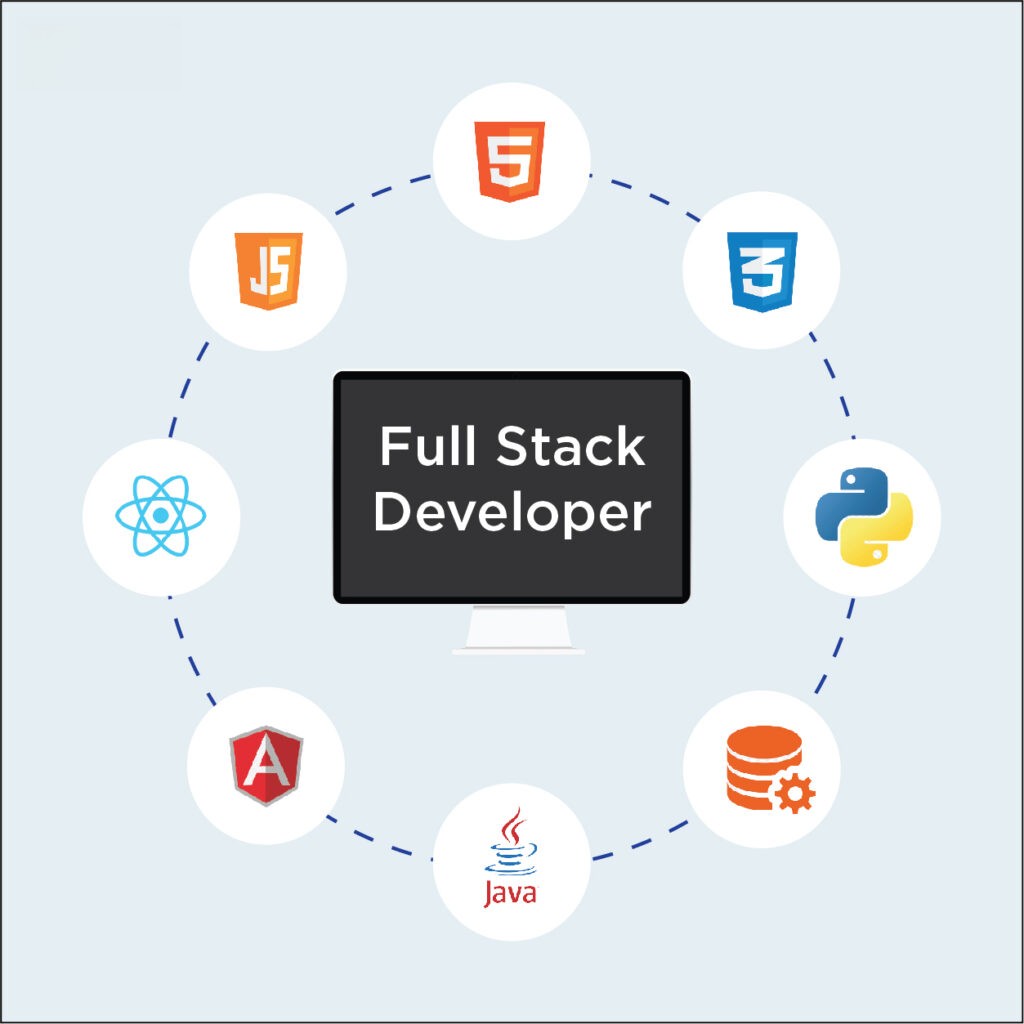Introduction
Global application demand is driving the demand for skilled full-stack developers. This reliance does not appear to be relinquishing anytime soon. Jobs in technology can be intimidating at times. Those who are willing to endure the learning curve, on the other hand, are frequently lavishly rewarded for their efforts. Although becoming a full-stack developer is difficult, the path to this industry is straightforward. The full-stack expert blueprint will help you understand the necessary steps and gain a better understanding of a full-stack developer’s career path.
Full Stack Developer: Meaning
There are two types of web development. Backend web development is the first component. As the name implies, it focuses on hidden aspects such as databases, servers, APIs, and so on.
Front-end development, which includes user-facing aspects such as graphical elements, design, and user interface, is the other component of web development.
A full-stack developer, on the other hand, is someone who works on the web development component of a website. These programmers are more adaptable and have in-depth knowledge of design projects. Additionally, the IT Institute Simba offers Full Stack Development Training in Surat. In addition, learn more about full stack development.
Ways to Become a Full-Stack Developer
Here are a few easy ways to become a full-stack developer:
● Select Your Learning Method
Professionals’ paths to becoming full-stack developers may differ. Many ambitious young professionals, on the other hand, want to learn full-stack programming, which has resulted in a flood of companies offering to teach them. This means that each student is free to study in the way that they see fit. They can learn how to be a full-stack developer through self-study or an internship with a reputable organisation.
Learn the necessary language.
The more programming languages you know, the more valuable you will be to a prospective employer. Web development is not immune to the IT industry’s ever-changing dynamics. As a result, a web developer’s eagerness to learn new and emerging programming languages determines a large part of their success. To begin, any self-respecting full-stack developer should be familiar with a wide range of front and backend programming languages. Frontend languages in this context include HTML, CSS, JavaScript, React, and Jquery. Backend technologies include Python, Ruby, SQL, Java, and PHP.
● Build a portfolio
Your portfolio serves as your initial point of contact. It necessitates consistent attention. It should be revisited on a regular basis to ensure that you look your best at all times. The goal of a great portfolio is to validate your talents, but the story behind your featured work is just as important.
● Create a Full-Stack Developer Resume
Your resume completes the gaps in your portfolio. This is your chance to expand your professional experience, education, and skill set. Most resumes don’t leave much room for personality, but a well-edited and well-organised submission can say a lot. Remember that an incorrect CV can derail even the most impressive portfolio.
● Prepare for Your Full-Stack Developer Interview
A job interview necessitates both preparation and personality. As a result, you must seek out the organisation, prepare responses to the most frequently asked full-stack developer interview questions, and prepare stories and experiences that highlight your strengths. Most importantly, be truthful. Lies and exaggerations almost never work in the long run and will always bite you in the rear.
Benefits of full-stack Development:
- Full Stack Developers work with various domain technologies. Web developers can operate efficiently with high-quality expertise in a variety of technologies by designing technology.
- It is more efficient to control each application with better customer coordination across all third parties than to have a separate team of database, front-end, and back-end experts.
- Full Stack development is in charge of both the project’s overall design and its site-specific implementation.
- A full-Stack developer considers all websites that could complete the task quickly.
- To quickly develop the prototype design, a full-stack developer must use a variety of servers, lateral designing capabilities, frameworks, languages, servers, and databases.
- They add tremendous business value to organisations by excelling at broad-based problems and lowering the costs of technological team communication and tool docking.
- Full Stack Web Development, in particular, opens up a plethora of processing options for a separate project. The leading full-stack technology company is seeking skilled Full Stack Developers with competitive pay and multiple advancement opportunities.
- Because it teaches advanced technologies such as back-end and JavaScript, the Full Stack Developer Course in Chennai is the best option.
- Ideation, cooperative, active innovative thinking, and communicative abilities enable developers to be self-organised, entrepreneurial, and effective team members on cross-functional teams.









